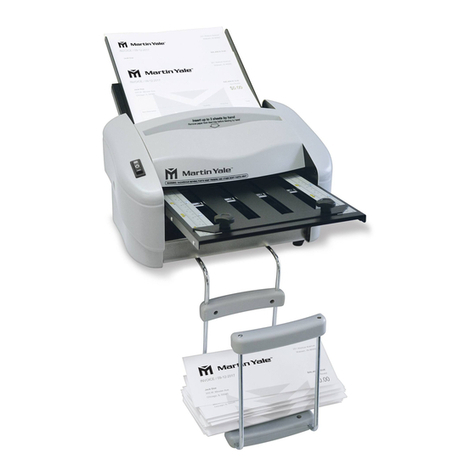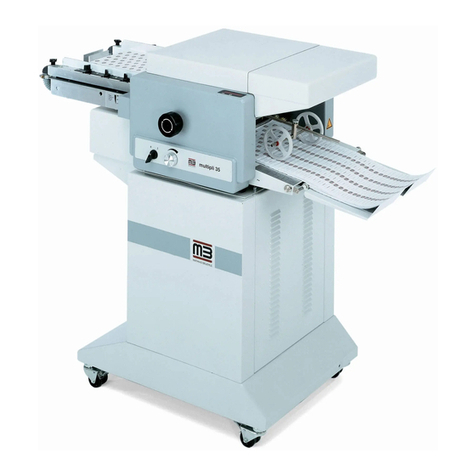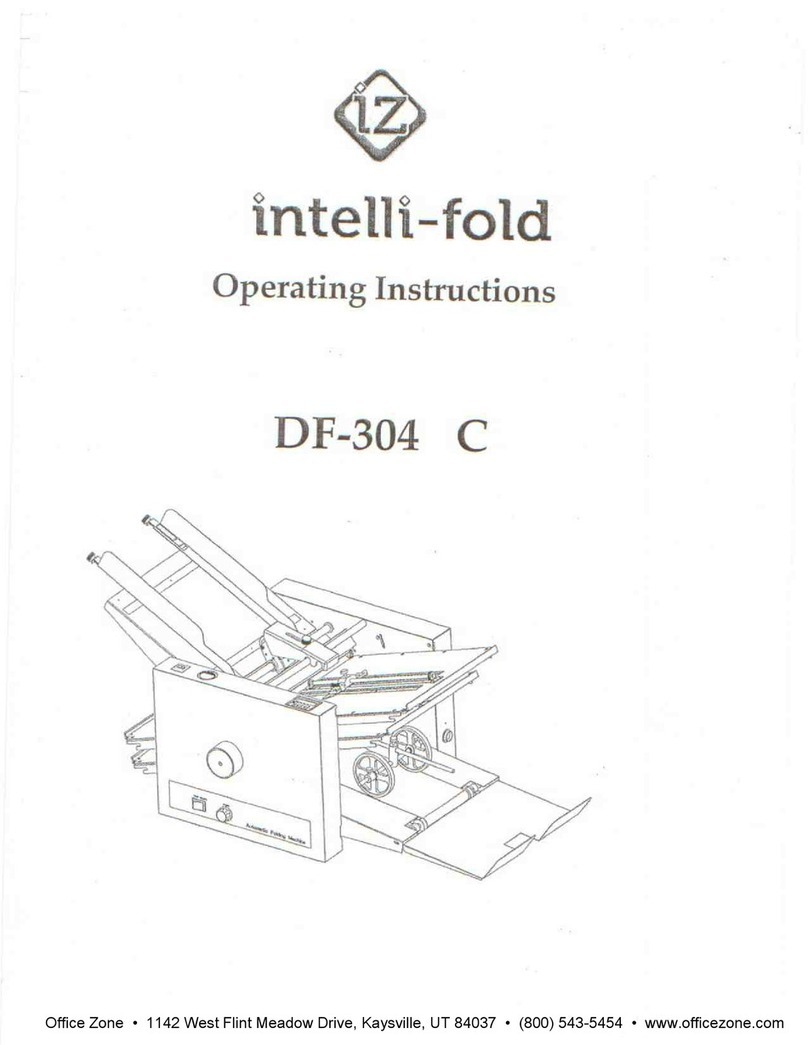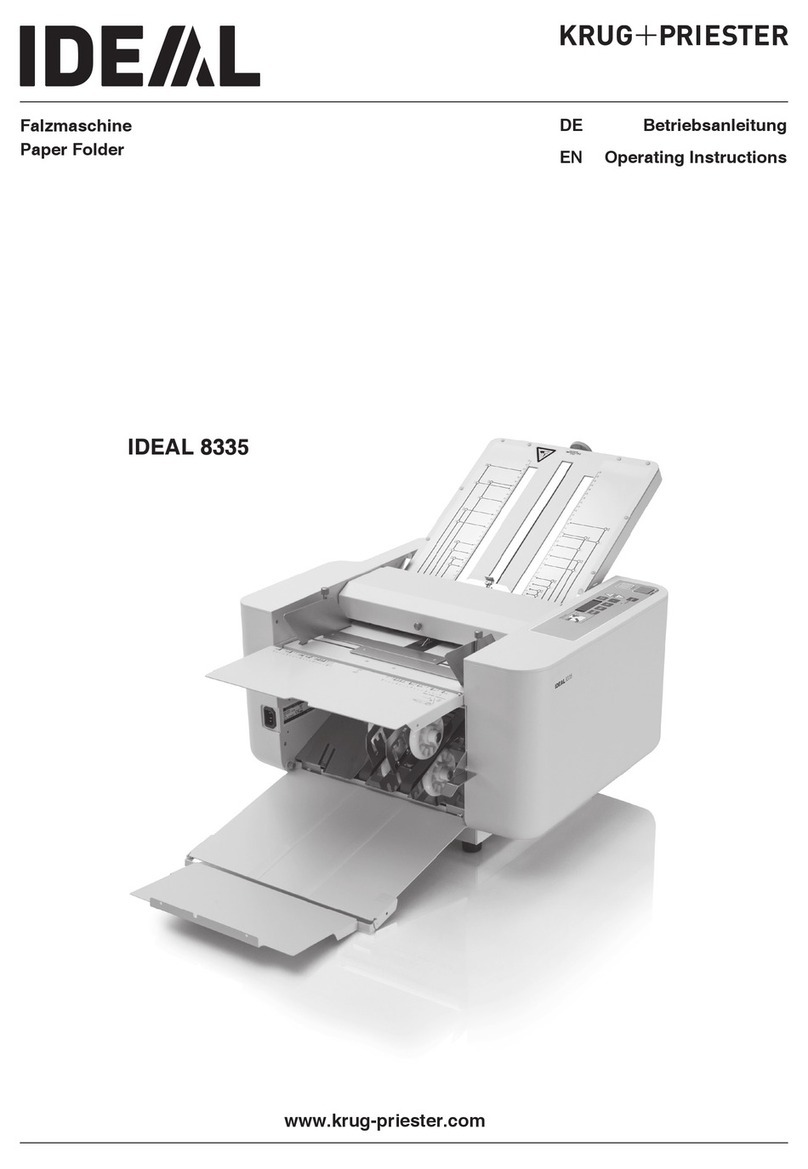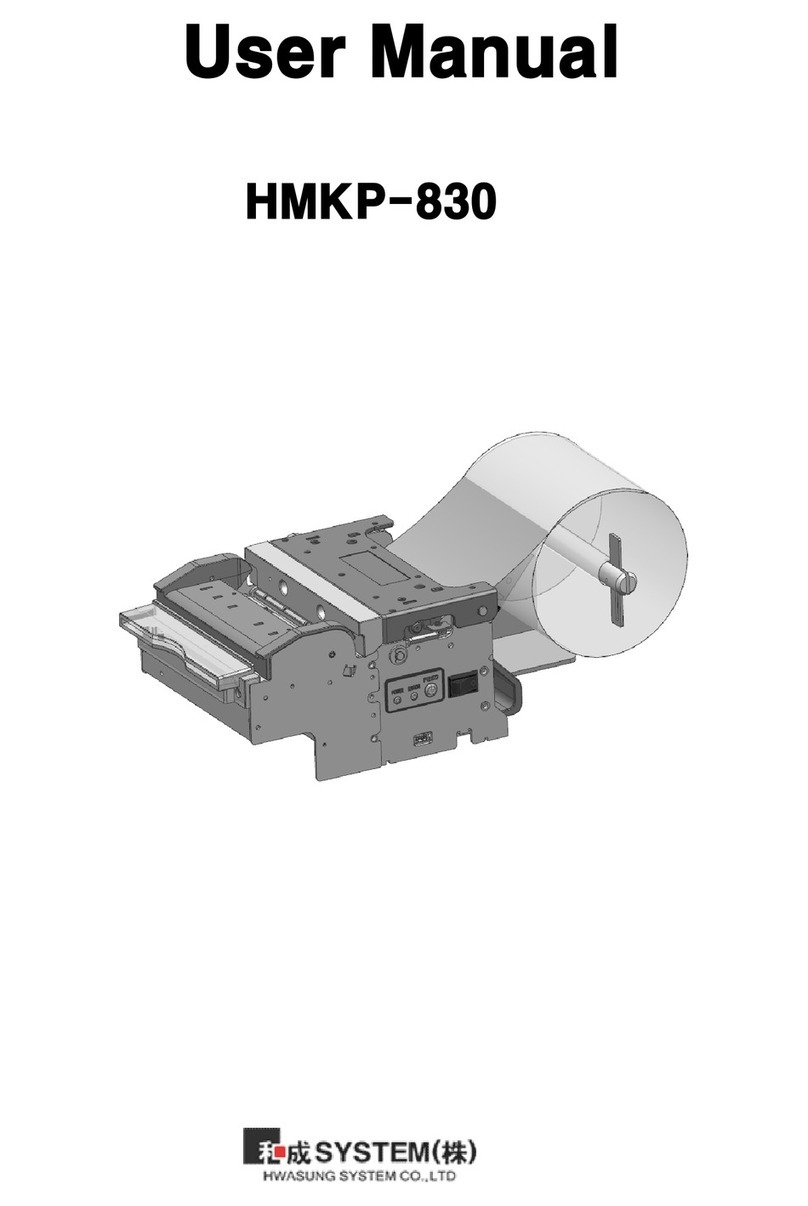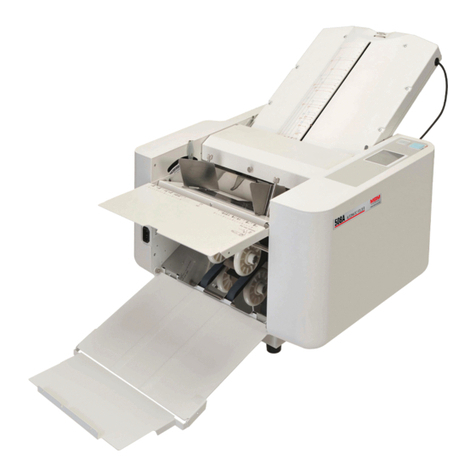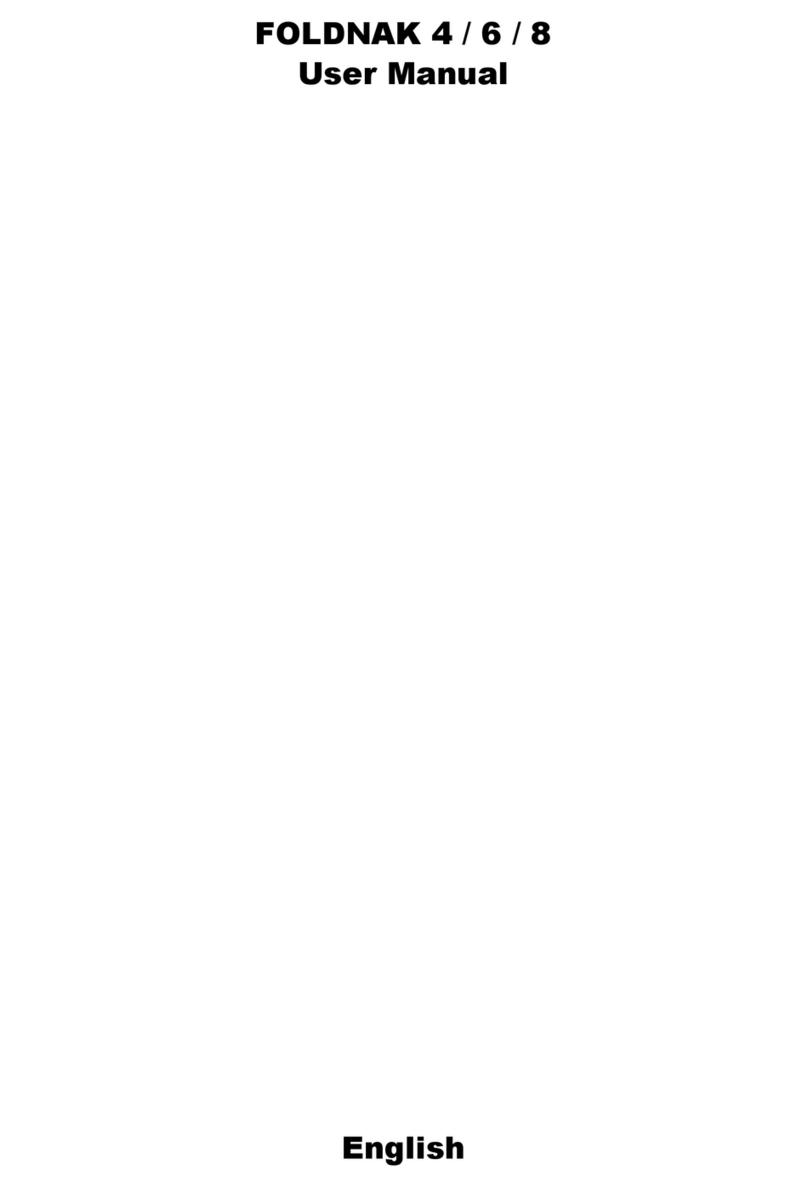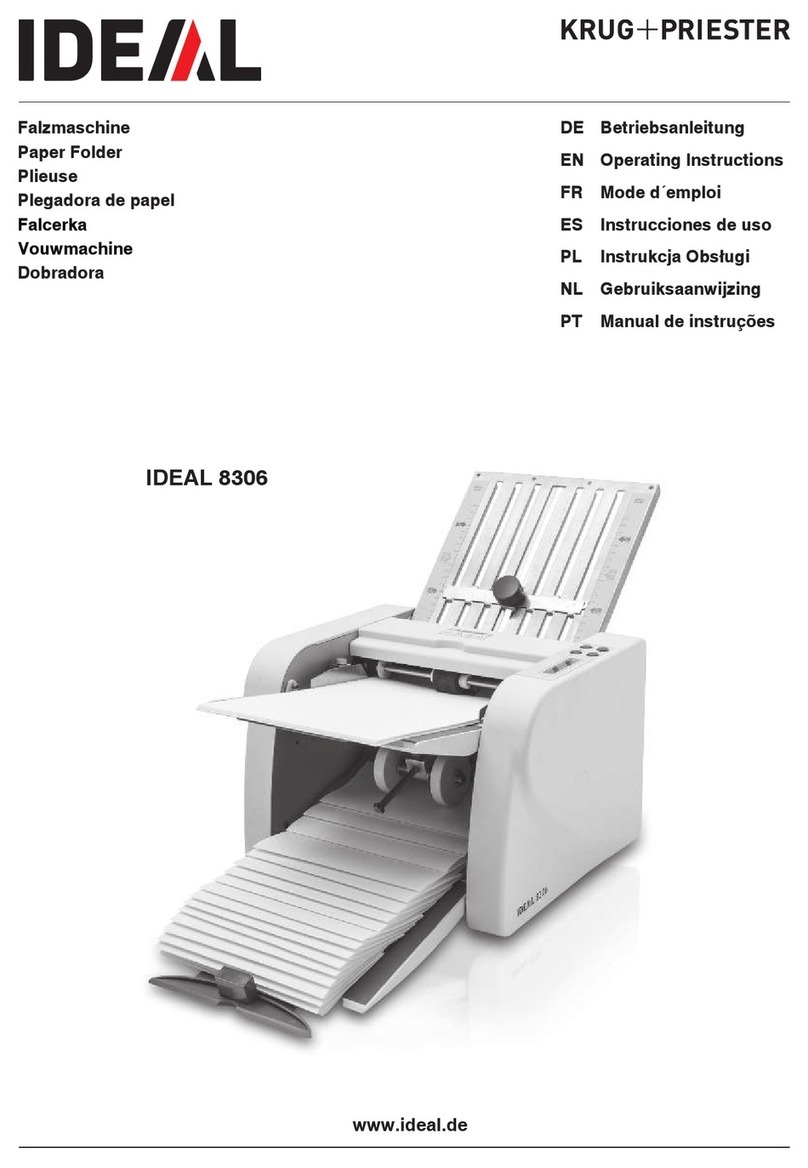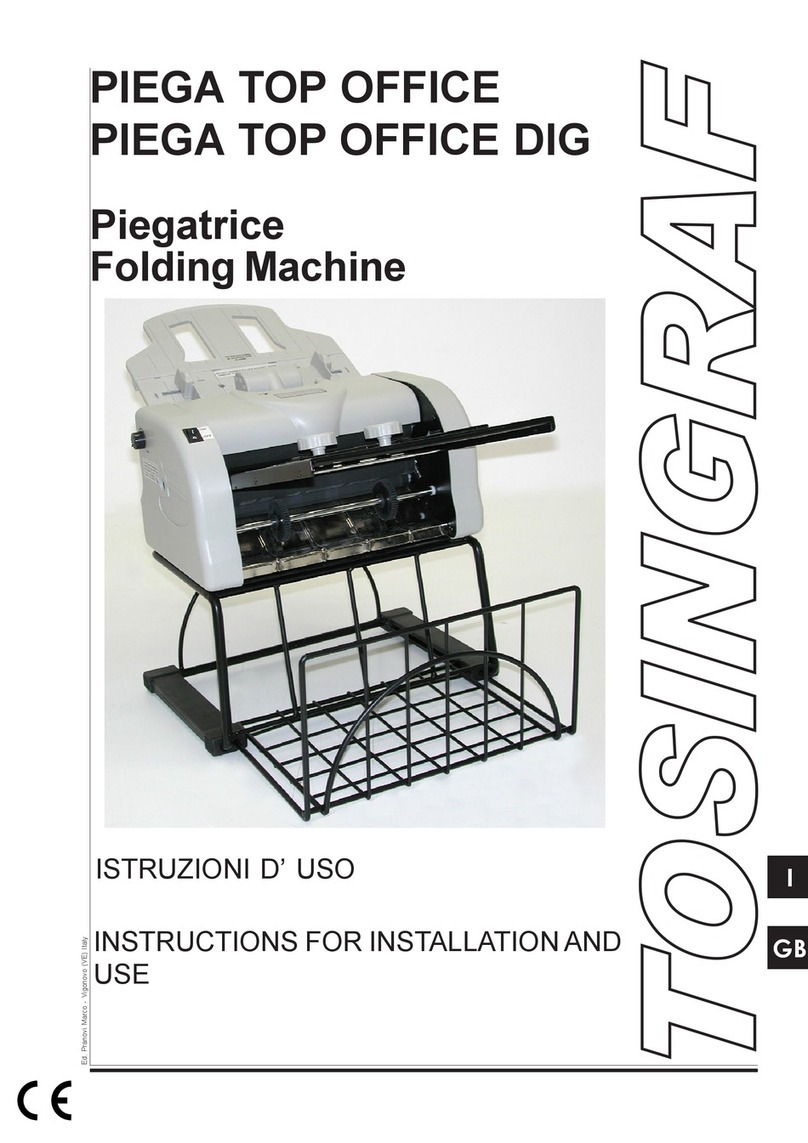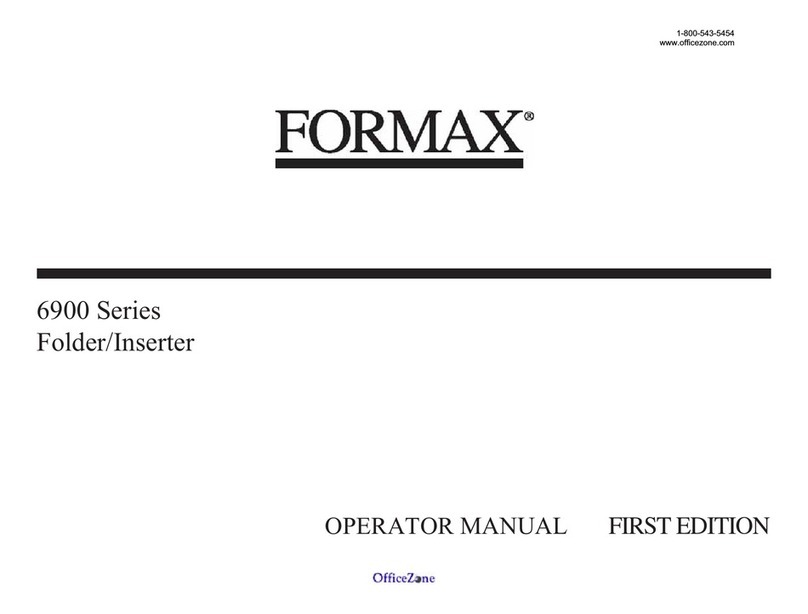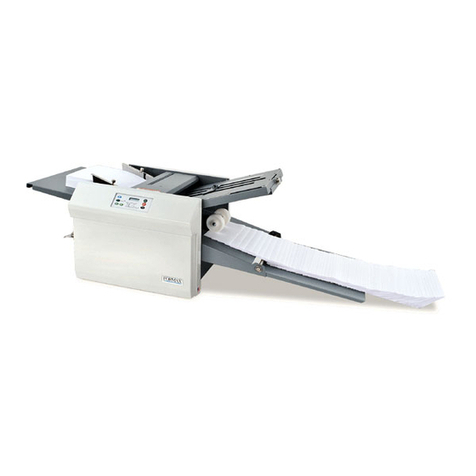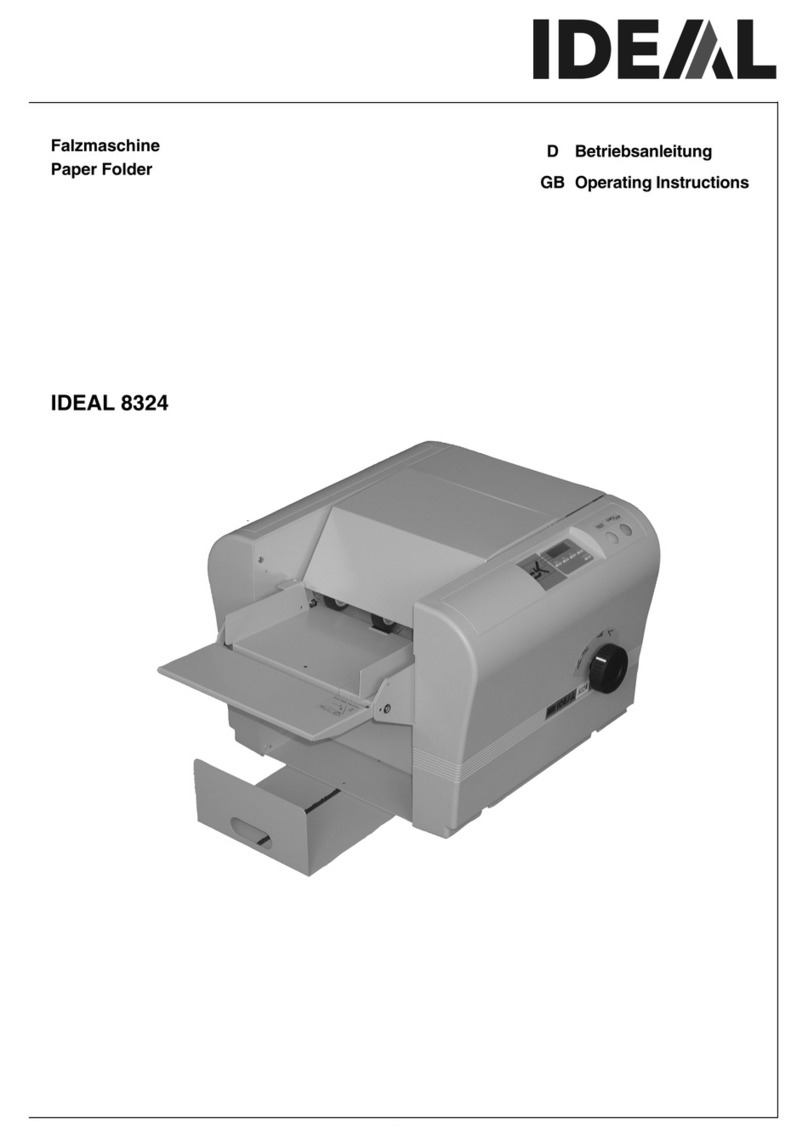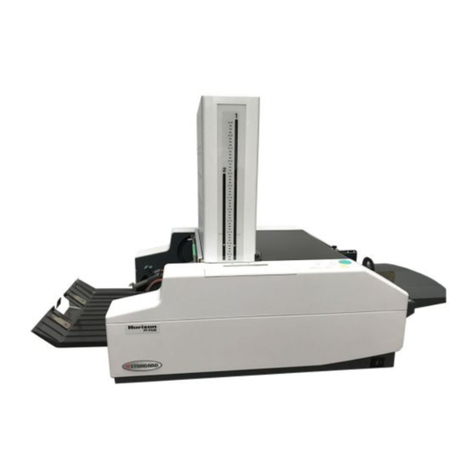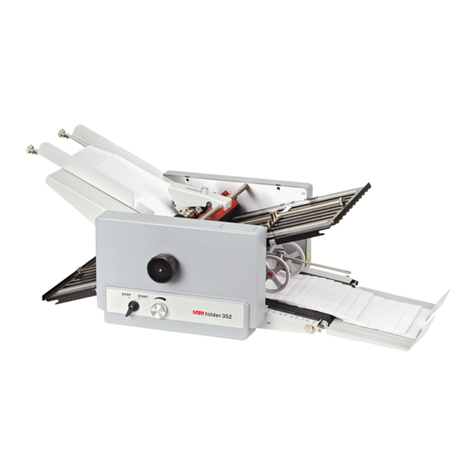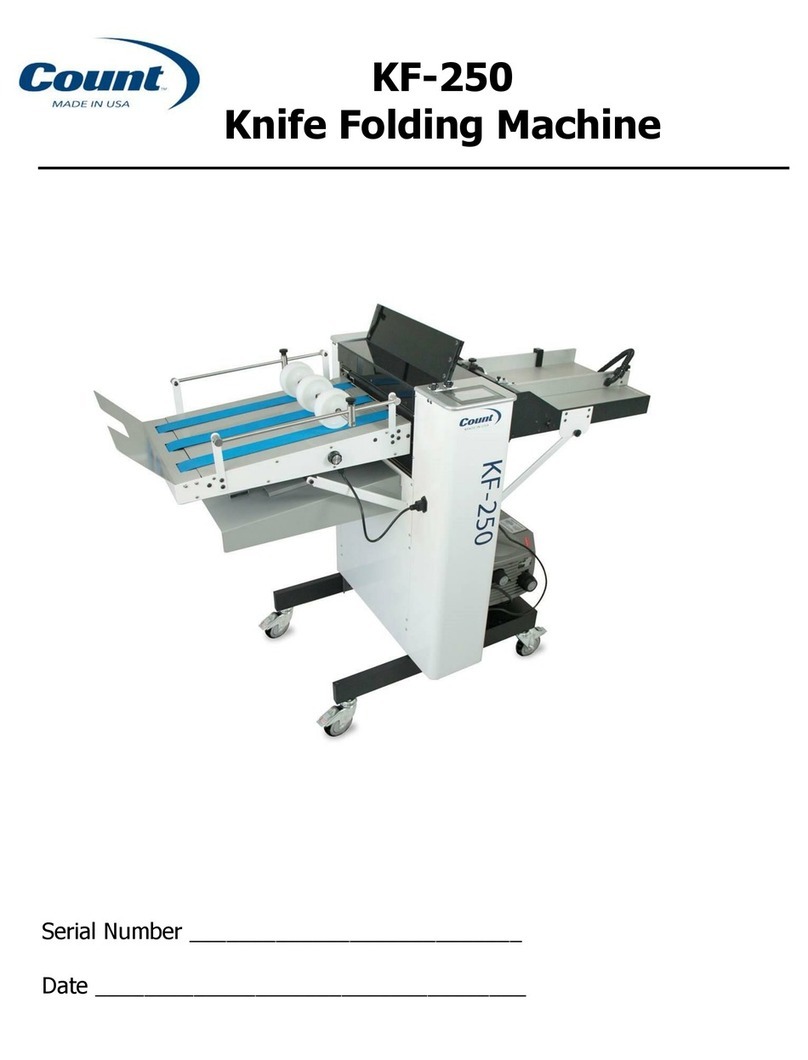Chicago Dryer AIR CHICAGO User manual

AIR CHICAGO®
(STANDARD/XW/XL/XXL)
Towel Folder
INSTRUCTION MANUAL

©Chicago Dryer Company
Instruction Manual #3019-105b
CHICAGO DRYER COMPANY
2200 N. Pulaski, Chicago, Illinois USA 60639-3737
Telephone: (773) 235-4430 Fax: (773) 235-4439 www.chidry.com

Air Chicago (Standard/XW/XL/XXL) Table of Contents
i
TABLE OF CONTENTS
MANUAL
Updates
Chapter 1 - Introduction
Chapter 2 - Installation
Chapter 3 - Operating Guidelines
Chapter 4 - Preventive Maintenance
Chapter 5 - Operating Principles
Chapter 6 - Troubleshooting
Chapter 7 - Repair
CHI PANEL BULLETIN
PICTURE PARTS LIST
SCHEMATIC PARTS LIST
APPENDIX
Floor Plans
Technical Specifications
Torque Specifications
INDEX

Table of Contents Air Chicago (Standard/XW/XL/XXL)
ii
CHAPTER 1 INTRODUCTION
1.1 Warranty .................................................................................................. 1-2
1.2 Scope of Manual ..................................................................................... 1-2
1.3 Safety ...................................................................................................... 1-3
Safe Work Habits .................................................................................... 1-3
Safety Features ....................................................................................... 1-4
1.4 Equipment Description ............................................................................ 1-6
Models and Model Designations ............................................................. 1-6
Optional Equipment ................................................................................. 1-6

Air Chicago (Standard/XW/XL/XXL) Table of Contents
iii
CHAPTER 2 INSTALLATION
2.1 Site and Utility Requirements .................................................................. 2-2
2.2 Installation Procedures ............................................................................ 2-4
Inspection ................................................................................................ 2-4
Uncrating and Positioning ....................................................................... 2-5
Compressed Air Supply Connection ....................................................... 2-6
Electrical Connection .............................................................................. 2-7
Final Protective Wrapper Removal .......................................................... 2-9
2.3 Pre-Operational Checkout ..................................................................... 2-10
Security of Hardware ............................................................................. 2-10
Compressed Air Supply Checkout .........................................................2-11
Ribbon Rotation Checkout .................................................................... 2-12
Safety Device and CHI Panel Function Checkout ................................. 2-13
Primary Fold Operation Checkout ......................................................... 2-15
Crossfold Operation Checkout .............................................................. 2-16
Checkout Completion ............................................................................ 2-16
Cleaning the Unit ................................................................................... 2-16

Table of Contents Air Chicago (Standard/XW/XL/XXL)
iv
CHAPTER 3 OPERATING GUIDELINES
3.1 Safety Features ....................................................................................... 3-2
Main Disconnect Switch .......................................................................... 3-2
Safety STOP Buttons .............................................................................. 3-2
Air Permeable Barriers (Safety Guards) ................................................. 3-2
Safety Interlock Switches ........................................................................ 3-3
Safety Labels .......................................................................................... 3-3
3.2 Operating Controls .................................................................................. 3-4
CHI Panel ................................................................................................ 3-6
3.3 Daily Operating Procedures .................................................................... 3-7
Start-Up ................................................................................................... 3-7
Handling Jams and Misfeeds Safely ....................................................... 3-8
Fold Operation ........................................................................................ 3-8
Shut-Down ............................................................................................ 3-12
3.4 Operating Techniques ........................................................................... 3-12
Processing Standards ........................................................................... 3-13
Work Habits ........................................................................................... 3-14

Air Chicago (Standard/XW/XL/XXL) Table of Contents
v
CHAPTER 4 PREVENTIVE MAINTENANCE
PM Task Table .................................................................................................... 4-1
4.1 Daily PM (8 Hours) .................................................................................. 4-2
Watch and Listen for Anything Abnormal ................................................ 4-2
General Cleanliness ................................................................................ 4-2
Check and Clean Photosensors .............................................................. 4-3
Check Safety Equipment ......................................................................... 4-3
4.2 Weekly PM (50 Hours) ............................................................................ 4-4
Check and Clean Inverter ....................................................................... 4-4
Polish Metal Surfaces ............................................................................. 4-5
Inspect Air Filter/Drain ............................................................................. 4-5
Check Air Pressure Settings ................................................................... 4-6
Check and Grease Stacker Door Bearings ............................................. 4-7
Lubricate Stacker Door Linkages ............................................................ 4-8
Check Belt and Ribbon Condition and Tension ....................................... 4-8
4.3 Monthly PM (200 Hours) ......................................................................... 4-9
Check Setscrews..................................................................................... 4-9
Clean and Lubricate Drive Chains ........................................................ 4-10
4.4 Semi-Annual PM (1000 Hours) ..............................................................4-11
Clean and Lubricate Threaded Rods .....................................................4-11
Clean Air Filter/Auto Drain ..................................................................... 4-13
Inspect Gear Reduction Unit ................................................................. 4-14
4.5 Annual PM (2000 Hours) ....................................................................... 4-15
Check All Electrical Connections ........................................................... 4-15
Check Insulation Resistance to Earth Ground ...................................... 4-16

Table of Contents Air Chicago (Standard/XW/XL/XXL)
vi
CHAPTER 5 OPERATING PRINCIPLES
Safety ................................................................................................................ 5-2
5.1 Electrical System ..................................................................................... 5-2
Power System ......................................................................................... 5-2
Control System ........................................................................................ 5-6
5.2 Compressed Air System ........................................................................ 5-10
Air Filter/Regulators............................................................................... 5-10
Air Pressure Switch ............................................................................... 5-10
Air Reservoir .......................................................................................... 5-10
Air Valves/Air Valve Solenoids ...............................................................5-11
Air Cylinder .............................................................................................5-11
Air Manifolds (Air Bars/Air Jets) .............................................................5-11
Pneumatic Clutch/Brake .........................................................................5-11
5.3 Mechanical System ............................................................................... 5-12
Main Drive System ................................................................................ 5-12
Primary Fold Ski Drive System .............................................................. 5-12
Stacker Drive System ............................................................................ 5-13
Exit and Return Drive Systems ............................................................. 5-13
Ribbon Sets ........................................................................................... 5-14
5.4 Sequence of Operation ......................................................................... 5-15
Stand-by Phase ..................................................................................... 5-15
Start-up Phase ...................................................................................... 5-15
Primary Fold Phase ............................................................................... 5-16
Crossfold Phrase ................................................................................... 5-16
Stacking Phase ..................................................................................... 5-16

Air Chicago (Standard/XW/XL/XXL) Table of Contents
vii
CHAPTER 6 TROUBLESHOOTING
Troubleshooting Symptoms ............................................................................... 6-2
6.1 CHI Diagnostic Message Index ............................................................... 6-6
6.2 LED Diagnostics ...................................................................................... 6-8
6.3 Electrical ................................................................................................ 6-10
6.4 Mechanical ............................................................................................ 6-13
6.5 Primary Folding ..................................................................................... 6-14
6.6 First Crossfold ....................................................................................... 6-17
6.7 Second Crossfold .................................................................................. 6-19
6.8 Stacker .................................................................................................. 6-20
6.9 Exit/Return Conveyors .......................................................................... 6-21
6.10 Sensor Function .................................................................................... 6-22
6.11 CHI Panel .............................................................................................. 6-23
6.12 Compressed Air System ........................................................................ 6-24

Table of Contents Air Chicago (Standard/XW/XL/XXL)
viii
CHAPTER 7 REPAIR
7.1 Safety Considerations ............................................................................. 7-2
7.2 Parts Availability ...................................................................................... 7-3
7.3 Ribbons ................................................................................................... 7-3
Inlet Ribbon Tension Adjustment ............................................................. 7-4
Primary Fold Ribbon Tension Adjustment ............................................... 7-4
Intermediate Ribbon Tension Adjustment ................................................ 7-5
Transfer Ribbon Tension Adjustment ...................................................... 7-6
Stacker Ribbon Tension Adjustment ........................................................ 7-7
Exit Conveyor Ribbon Tension Adjustment ............................................. 7-8
Return Conveyor Ribbon Tension Adjustment ......................................... 7-9
Ribbon Replacement ............................................................................. 7-10
7.4 Rolls ...................................................................................................... 7-12
First Crossfold Pinch Point Gap Adjustment ......................................... 7-12
Tracking Tape Overview ........................................................................ 7-14
White Tracking Tape Replacement ........................................................ 7-15
Grey Tracking Tape Replacement ......................................................... 7-16
Riveted Tracking Tape Replacement ..................................................... 7-17
7.5 Chains and Belts ................................................................................... 7-19
Main Drive Chain Tension Adjustment ................................................... 7-19
Primary Fold Ski Drive Chain Tension Adjustment ................................ 7-20
Primary Fold Ribbon Drive Chain Tension Adjustment .......................... 7-21
Transfer Ribbon Drive Chain Tension Adjustment ................................. 7-22
Inlet Ribbon Drive Belt Tension Adjustment .......................................... 7-23
Stacker Ribbon Drive Belt Tension Adjustment ..................................... 7-24
Primary Fold Ski Position Adjustment ................................................... 7-25
7.6 Mechanical Adjustments ....................................................................... 7-28
Primary Fold Conveyor Stop Position Adjustment ................................ 7-28
Clutch Adjustment ................................................................................. 7-29
Second Crossfold Steel Fingers Adjustment ......................................... 7-30
Stacker Door Mechanical Adjustments ................................................. 7-31

Air Chicago (Standard/XW/XL/XXL) Table of Contents
ix
7.7 Sensors ................................................................................................. 7-32
Photosensor Replacement .................................................................... 7-32
Primary Fold Ski Position Detect Proximity Sensor Adjustment ............ 7-34
Primary Fold Ski Position Detect Proximity Sensor Replacement ........ 7-35
Stacker Proximity Sensor Adjustment ................................................... 7-36
Stacker Proximity Sensor Replacement ................................................ 7-38
Primary Fold Skis Limit Switch Adjustment ........................................... 7-39
7.8 Compressed Air System ........................................................................ 7-41
Primary Fold Air Manifold Alignment ..................................................... 7-41
Crossfold Air Manifold Alignment .......................................................... 7-42
Stacker Door Air Cylinder Air Flow Adjustment ..................................... 7-43
Air Valve Repair ..................................................................................... 7-44


General 3023-442
Chicago Dryer Company 1
Safety
It is always recommended that all maintenance
procedures be handled by at least two qualified persons.
Using the “buddy system” facilitates a quicker
procedure and decreases the risk of an accident.
WARNING
Follow lockout/ tag out
procedures approved for
your site. Follow local
regulations. Failure to do so
could result in serious injury.
Make sure that power is
OFF at the main disconnect
switch before beginning any
repair procedure.
F. Y. I. Service Bulletin
AIR FILTER/AUTO DRAIN
PM UPDATE
In an ongoing effort to provide you with the most complete and up-to-date information, we are
including this additional information on your machine, which may differ from the manual. Please read
this bulletin carefully. It contains current and updated information specific to your unit.
Any questions you may have regarding the information in this bulletin should be directed to your local
authorized CHICAGO® distributor or the Chicago Dryer Company Service Department at:
Chicago Dryer Company (773) 235-4430
2300 North Pulaski Fax (773) 235-4439
Chicago, Illinois USA 60639-3737 Email service@chidry.com
Purpose
The purpose of this bulletin is to provide updated
semi-annual preventive maintenance information
on air filter/auto drain units.

3023-442 General
2 Chicago Dryer Company
Procedure
The air filter auto drain requires periodic
cleaning to maintain maximum filtering efficiency
and to avoid excessive pressure drop.
The cleaner the compressed air supply, the less
maintenance will be required. A visible coating
of dirt or condensate on the filter element surface
or excessive pressure drop is an indication that
cleaning is necessary.
WARNING
Before disassembling the air
filter/auto drain, turn off the
air supply and depressurize
the system and filter.
Required Tools
compressed air, mild detergent
solution, alcohol
Perform only when the unit is OFF
with power disconnected and COOL.
Turn off the compressed air supply and
depressurize the unit.
Turn power OFF at the main disconnect
switch.
Press the black plastic tab on the side of the
bowl case down (Figure 1, A) and rotate
it left or right until the two marks on the
bowl case light up with the single mark on
the filter base (B).
Pull down on the bowl case to remove
it. The filter base does not need to be re-
moved from the machine.
Take the polyurethane bowl (Figure 2, A)
and rinse with ONLY water and household
soap.
Unscrew the filter assembly and separate
the components (Figure 2, C, D, E).
1.
2.
3.
4.
5.
6.
Remove the filter element (Figure 2, D),
wash it in alcohol, and blow it out from
the inside.
Clean the other components (Figure 2, B,
C, E) with alcohol.
Re-assemble the clean components and in-
stall the filter assembly back on the base.
Re-attach the clean polyurethane bowl,
lining up the marks as in Step 3.
Press up on the bowl and twist left or right
until the plastic tap snaps into position.
7.
8.
9.
10.
11.
Figure 2: All the components in the air filter
assembly can be washed with alcohol,
EXCEPT the bowl.
A
E
D
C
Figure 1: Press the plastic tab and twist the
casing to line up the marks to remove
the filter bowl from the machine.
B
A
B

Air Chicago (Standard/XW/XL/XXL) Introduction
1-1
Chapter 1
INTRODUCTION
This chapter contains the following sections:
1.1 Warranty 1.3 Safety
1.2 Scope of Manual 1.4 Equipment Description
The Air ChicagoTM folds all types of towels of varying size and thickness as well as pillowcases and
other small items. It is capable of handling pieces up to 36” (910 mm) wide and 72” (1,820 mm) long.
This unit will process polyester/cotton blends, VISA®, or all-cotton fabrics. It can be set up for left
return, right return or rear discharge. The Air Chicago produces half or French-style primary folds. It
can produce either one or two standard crossfolds, or a French-style crossfold; with or without primary
folds if desired.
The Air Chicago (Figure 1-1), like the rest of CHICAGO’s product line, is designed, manufactured,
and assembled in Chicago. Before the CHICAGO® nameplate is affixed to any machine, a final inspection
is performed, including thorough testing under load conditions.
Any questions concerning the installation, operation, or repair of the unit should be directed to a local
authorized CHICAGO® dealer or the Chicago Dryer Company factory Service Department at:
Chicago Dryer Company (773) 235-4430
2200 North Pulaski Fax (773) 235-4439
Chicago, Illinois USA 60639-3737 Email service@chidry.com
Figure 1-1: The Air Chicago provides high-production, high quality folding of towels and other small flatwork.

Introduction Air Chicago (Standard/XW/XL/XXL)
1-2
1.1 Warranty
A full page warranty statement is located at
the front of this instruction manual. Please take
the time to review this warranty and understand
its provisions.
1.2 Scope of Manual
This instruction manual will help you keep
your CHICAGO® product operating safely,
efficiently and with minimum expense. Individual
chapters in this manual provide the necessary
information required for safe installation,
operation, maintenance, troubleshooting, and
repair of the unit.
Updates
Occasionally, new information about the
unit becomes available after publication of this
manual. If you receive a CHICAGO®
FYI Service
Bulletin pertaining to our unit, insert the bulletin
in the front of the manual.
Chapter 1 - Introduction
Provides an overview of the unit and its key
features, of this manual, and of important safety
features.
Chapter 2 - Installation
Describes recommended procedures for
determining a suitable location for the unit and
connecting the electrical and the compressed air
supplies. This chapter also includes checkout
procedures to ensure all systems are working
properly. Local requirements often vary, so follow
local codes at all times.
Chapter 3 - Operating Guidelines
Gives recommendations for operating the unit
at maximum efficiency. This chapter also includes
instructions for the operators and suggestions for
work organization.
Chapter 4 - Preventive Maintenance
Contains procedures for Daily, Weekly,
Monthly, Semi-Annual, and Annual
maintenance. Follow these procedures to keep the
unit operating safely and at maximum efficiency.
A Preventive Maintenance schedule is located at
the front of the chapter.
Chapter 5 - Operating Principles
Describes the operation of the unit in detail. A
good understanding of this chapter will help avoid
operation errors and assist with troubleshooting
and maintenance.
Chapter 6 - Troubleshooting
Contains issues, possible causes, and solutions
in all areas of operation.
Chapter 7 - Repair
Contains procedures for making adjustments,
repairs and parts replacement for the unit. Please
follow all safety recommendations carefully.
CHI Panel Operation Bulletin
Describes in detail the operation of the fold
control system. Programming, adjustment and
test modes are detailed in this bulletin.
Parts List
Contains detailed drawings and part
specifications to assist in ordering replacement
parts. It is divided into views in which the parts
are grouped by function.
Schematics
Contains electrical drawings showing power
and motor circuits, control and interlock circuits,
and any other relevant drawings.
Appendix
Contains Technical Specifications, a Floor
Plan, and other relevant information for the
unit.

Air Chicago (Standard/XW/XL/XXL) Introduction
1-3
1.3 Safety
Safe operation and maintenance of the unit
must be the first priority of all supervisors,
operators and maintenance personnel. Safety
begins with safe work habits. In addition, the
unit is equipped with built-in features to promote
safety.
Safe Work Habits
During Daily Operation
Take the flatwork only after it has
cleared the unit. Do not pull on the
flatwork while it is still in the machine.
Post the “Operator Safety” reminders
in a place where everyone will see it.
Read these reminders and follow the
recommendations.
Read and follow all safety labels.
Keep hands and clothing away from the
moving parts of the folder while it is
operating.
Always turn off the unit before clearing
a jam.
Operate the folder only with all guards
and endframe doors in place and all
safety features operating correctly.
Never operate the unit with any safety
features bypassed.
Never stand, sit or kneel on any part of
the unit.
•
•
•
•
•
•
•
Maintenance and Repair
WARNING
Always use extreme caution
when performing any repair
procedure that requires the
unit to be operating.
Keep hands and loose
clothing from coming into
contact with any of the
moving parts.
Serious Injury Could Result.
When the unit is running, one
person should be ready at a
red safety STOP button at all
times.
Before attempting any repair work, review
these safety steps and precautions to protect
yourself and the unit.
Safety should be the primary concern
of anyone performing corrective
maintenance.
Except where specifically directed, make
sure that the main disconnect switch to
incoming power is OFF.
It is recommended that all maintenance
procedures be handled by at least two
qualified persons. Using the “buddy
system” decreases the risk of an
accident.
Your site should have procedures that
comply with government regulations and
standards for equipment lockout/tagout
during maintenance and repair. Ask your
supervisor for specific information. It
is the users’ responsibility to make sure
they comply with all safety procedures.
•
•
•
•

Introduction Air Chicago (Standard/XW/XL/XXL)
1-4
WARNING
Know the proper procedure
for locking out and tagging
equipment during repair
procedures.
Follow the rules of your work
site. Failure to do so could
result in serious injury.
Make sure the power
is disconnected before
servicing the unit.
Do not repair or correct any
condition without reading
and understanding the
REPAIR chapter.
Only qualified personnel
should troubleshoot and
repair this unit.
Safety Features
There are six general categories of safety
features:
Main Disconnect Switch
Safety Guards
Safety Interlock Switches
Safety Stop Buttons
Safety Labels
Safety Messages in this Manual
Main Disconnect Switch
The main disconnect switch is located on the
outside of the electrical connection box on the
left side of the unit near the front. When turned
to OFF, the main disconnect switch locks out the
incoming electrical power to the unit.
Unless otherwise indicated, turn the main
disconnect switch to OFF before performing any
maintenance or repair work.
For more information on operating the main
disconnect switch, refer to the INSTALLATION
chapter, Installation Procedures section,
Electrical Connection procedure.
Safety Guards
The air permeable barrier has a safety function
as well as helping to make the primary folds. The
air permeable barrier covers the top of the unit
and prevents fingers or hands from coming into
contact with moving parts.
Doors cover the endframes and there are also
covers over the equipment at the rear and front
of the unit. These prevent fingers or hands from
coming into contact with moving parts. They also
serve to keep foreign objects from entering the
unit and damaging components.
•
•
•
•
•
•

Air Chicago (Standard/XW/XL/XXL) Introduction
1-5
Safety Interlock Switches
Safety interlock switches are located behind
each endframe panel, behind the rear cover panel,
and under the air permeable barriers. Whenever
any panel is removed, the interlock on that
door is disconnected and all rotating parts stop
moving.
The safety interlock switches are not intended
to lockout the unit. Site management is responsible
for developing and implementing lockout/tagout
procedures that comply with government
standards for use when servicing the unit.
Safety Stop Buttons
There are three red safety STOP buttons
arrayed around the unit, one at the left front and
one at each rear corner. Pressing any of these
buttons immediately stops all rotating and moving
parts and shuts down the machine. To reset a
pressed STOP button, twist it.
The preferred method of stopping the operation
of the unit is by pressing the red STOP button in
the center control panel.
Safety Labels
Orange Warning and yellow Caution labels
(Figure 1-2) are placed at locations around the
unit to keep operators and maintenance personnel
alert in particular areas.
WARNING message labels alert personnel that
personal injury may result from not following
recommended procedures.
CAUTION message labels alert personnel that
the machine may be damaged if conditions,
practices, or procedures are not observed.
When training operators, take the time to
review, understand, and locate all areas where
labels are posted.
NOTE: Do not remove safety
labels at any time. If a label
needs to be replaced, contact
Chicago Dryer Company for free
replacements.
Figure 1-2: Safety labels remind operators and
maintenance personnel that care must
be taken when working near these
areas.

Introduction Air Chicago (Standard/XW/XL/XXL)
1-6
Safety Messages in this Manual
WARNING and CAUTION messages also
appear in this manual to highlight essential safety
information.
WARNING messages alert personnel that
personal injury may result from not following
recommended procedures.
WARNING
Never bypass any of the
safety devices. This could
result in serious injury.
BLACK BOX WARNING messages alert
personnel of the operating condition a unit
must be in before performing any procedure.
Personal injury may result from not following
recommended procedures.
Perform only when the unit is OFF
with power disconnected.
CAUTION messages alert personnel that the
unit may be damaged if conditions, practices,
or procedures are not observed.
CAUTION
Never use compressed air
on or around electronic
components.
1.4 Equipment Description
A general overview of the Air Chicago towel/
gown folder includes:
Models and Model Designations
Optional Equipment
Models and Model Designations
The Air Chicago provides precision folding
of towels up to 36” x 72” (915 mm x 1830 mm),
hospital gowns, baby blankets and assorted items.
Items up to 26” (660 mm) wide can be quarter
folded. The minimum item size is 16” x 20” (400
mm x 500 mm). The following model options are
also available:
Air Chicago XW: Accommodates items
up to 48” (1200 mm) in width.
Air Chicago XL: Accommodates items
up to 36” x 96” (915 mm x 2400 mm).
Air Chicago XXL: Accommodates
items up to 36” x 108” (915 mm x 2740
mm).
XL and XW models are also available
in XW to accommodate items up to 48”
(1200 mm) in width. Minimum item
width is 22” (560 mm)
Optional Equipment
The following optional equipment is available
on all models:
Inlet Ribbon Delay: Allows a delay to be
set in a CHI Panel program, pausing the inlet
ribbons long enough for the operator to place
apron strings onto the item before it is carried
into the unit for folding.
Pacing Lights: Allows operating standards
to be set and provides a visual signal to indicate
whether operators are reaching target production
rates.
ChiLinc: Production data accumulation and
reporting system for archiving and analysis of
production and efficiency information.
•
•
•
•
•
•
Table of contents
Other Chicago Dryer Folding Machine manuals


